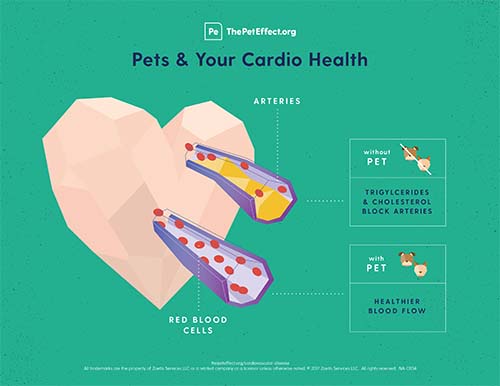The Human Animal Bond Research Institute (HABRI) joins our partners at Mental Health America (MHA) in recognizing May as Mental Health Month. Together, we celebrate the role of pets in positively influencing our mental health.
This year’s Mental Health Month theme is Look Around, Look Within, which reminds us that where we are born, live, learn, play, work, and congregate all influence our health, and that we all benefit from stable environments and strong communities. For nearly 70% of U.S. households pets are part of the family and have a significant influence on our mental health. Eighty-Seven percent of pet owners have experienced mental health improvements resulting from pet ownership, and research has shown the benefits for the long-term management of mental health conditions.
HABRI is proud to champion research on the vital role of the human-animal bond in the health and well-being of people, pets, and the communities where we live. In light of this year’s theme, we’ve compiled research and information that illustrates how pets can empower better mental health.
Look Around: Pets and Community Well-Being
Our surroundings say a lot about our mental health. A strong sense of community and stable environment protects mental health and increases resilience. Research shows how pets help bring people and communities together, acting as natural facilitators for social interactions[1].
HABRI found that 75% of pet owners agree that pets help bring people together from different walks of life, and that having a pet makes it easier to connect with neighbors. Other research has found that by acting as a natural facilitator for new social interactions, pets can help their owners get to know people in their own neighborhood and forge friendships[2]. Research also shows that dogs help make people recognizable and identifiable to others and even encourage conversation with strangers[3].
Spending time in nature is also linked to positive mental health outcomes, and pets can help connect us with our natural surroundings[4] and motivate us to get outside. Having a dog can strongly influence how much people exercise, and dog owners have been found to walk 200 more minutes a week than people who do not own dogs[5].
Look Within: Pets and Personal Well-Being
Research shows that pets can serve as important sources of emotional support, boosting mood and improving wellbeing. Pets bring comfort and joy, with research showing that living with a pet can lead to more opportunities for laughter throughout the day[6].
Pets can also help us create healthy routines in our daily life, which is important for our mental health. People living with a long-term mental illness report that caring for a pet helps to establish a routine that provides social and emotional support, a sense of order, security and responsibility[7], as well as a distraction from distressing symptoms and a sense of meaning in their life. For older adults who live alone, caring for pets can also offer an important sense of meaning and happiness[8].
Celebrating Mental Health Month
If you are interested in serving as an advocate for good mental health, there are several ways you can get involved with Mental Health Month by participating in officially sponsored initiatives from Mental Health America.
Please consider helping HABRI raise awareness of the mental health benefits of pet ownership by sharing this blog on your websites, newsletters, and social media channels. To learn more about the many ways in which pets help us lead healthier, happier lives, please visit habri.org.
Bibliography
[1] Veevers, J. E. (1985). The social meaning of pets: Alternative roles for companion animals. Marriage & Family Review, 8(3-4), 11-30.
[2] Wood, L., Martin, K., Christian, H., Nathan, A., Lauritsen, C., Houghton, S., … & McCune, S. (2015). The pet factor-companion animals as a conduit for getting to know people, friendship formation and social support. PloS one, 10(4), e0122085.
[3] Power, E. R. (2013). Dogs and practices of community and neighboring. Anthrozoös, 26(4), 579-591.
[4] Yerbury, Rachel M., and Samantha J. Lukey. “Human–animal interactions: Expressions of wellbeing through a “nature language”.” Animals 11.4 (2021): 950.
[5] Westgarth, C., Christley, R. M., Jewell, C., German, A. J., Boddy, L. M., & Christian, H. E. (2019). Dog owners are more likely to meet physical activity guidelines than people without a dog: An investigation of the association between dog ownership and physical activity levels in a UK community. Scientific reports, 9(1), 1-10.
[6] Valeri, R. M. (2006). Tails of laughter: A pilot study examining the relationship between companion animal guardianship (pet ownership) and laughter. Society & Animals, 14(3), 275-293.
[7] Brooks, H., Rushton, K., Walker, S., Lovell, K., & Rogers, A. (2016). Ontological security and connectivity provided by pets: a study in the self-management of the everyday lives of people diagnosed with a long-term mental health condition. BMC psychiatry, 16(1), 1-12.
[8] Kalenkoski, C. M., & Korankye, T. (2022). Enriching lives: how spending time with pets is related to the experiential well-being of older Americans. Applied Research in Quality of Life, 17(2), 489-510.





